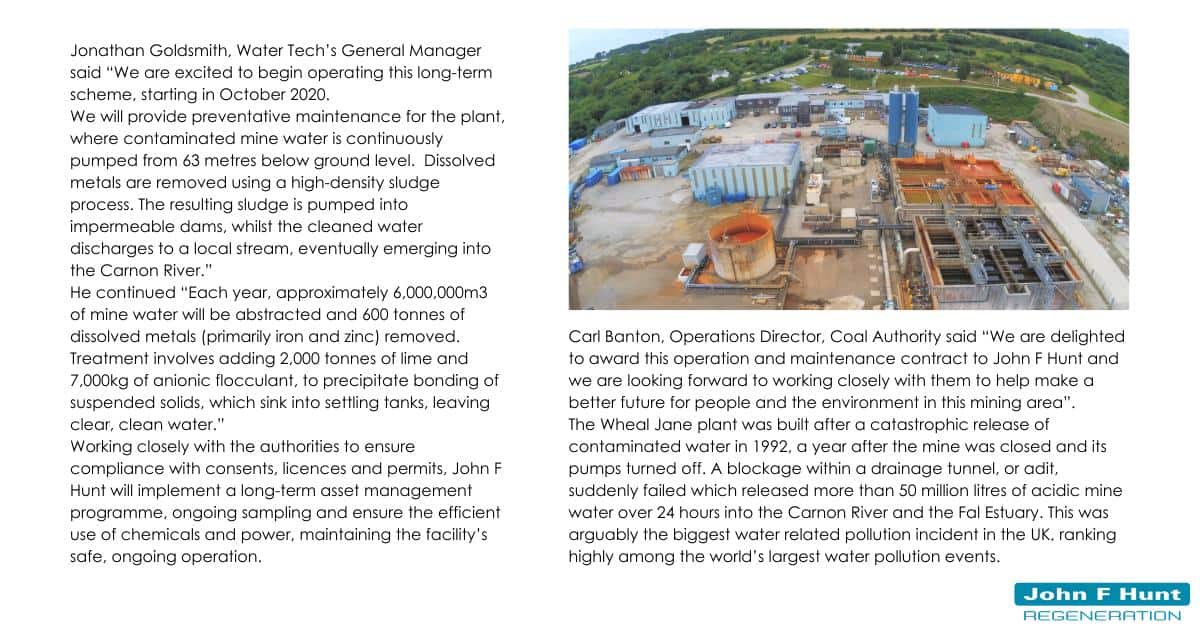
John F Hunt’s Water Tech team has been awarded a 5 year Operation and Maintenance Contract by the Coal Authority, on behalf of DEFRA and the Environment Agency, for the mine water treatment facility near Truro in Cornwall.
Jonathan Goldsmith, Water Tech’s General Manager said “We are excited to begin operating this long-term scheme, starting on the 1st October 2020. We will provide preventative maintenance for the plant, where contaminated mine water is continuously pumped from 63 metres below ground level. Dissolved metals are removed using a high-density sludge process. The resulting sludge is pumped into impermeable dams, whilst the cleaned water discharges to a local stream, eventually emerging into the Carnon River.”
He continued “Each year, approximately 6,000,000m3 of mine water will be abstracted and 600 tonnes of dissolved metals (primarily iron and zinc) removed. Treatment involves adding 2,000 tonnes of lime and 7,000kg of anionic flocculant, to precipitate bonding of suspended solids, which sink into settling tanks, leaving clear, clean water.”
Working closely with the authorities to ensure compliance with consents, licences and permits, John F Hunt will implement a long-term asset management programme, ongoing sampling and ensure the efficient use of chemicals and power, maintaining the facility’s safe, ongoing operation.
Carl Banton, Operations Director, Coal Authority said “We are delighted to award this operation and maintenance contract to John F Hunt and we are looking forward to working closely with them to help make a better future for people and the environment in this mining area”.
The Wheal Jane plant was built after a catastrophic release of contaminated water in 1992, a year after the mine was closed and its pumps turned off. A blockage within a drainage tunnel, or adit, suddenly failed which released more than 50 million litres of acidic mine water over 24 hours into the Carnon River and the Fal Estuary. This was one of the biggest water related pollution incident in the UK, ranking highly among the world’s largest water pollution events.

